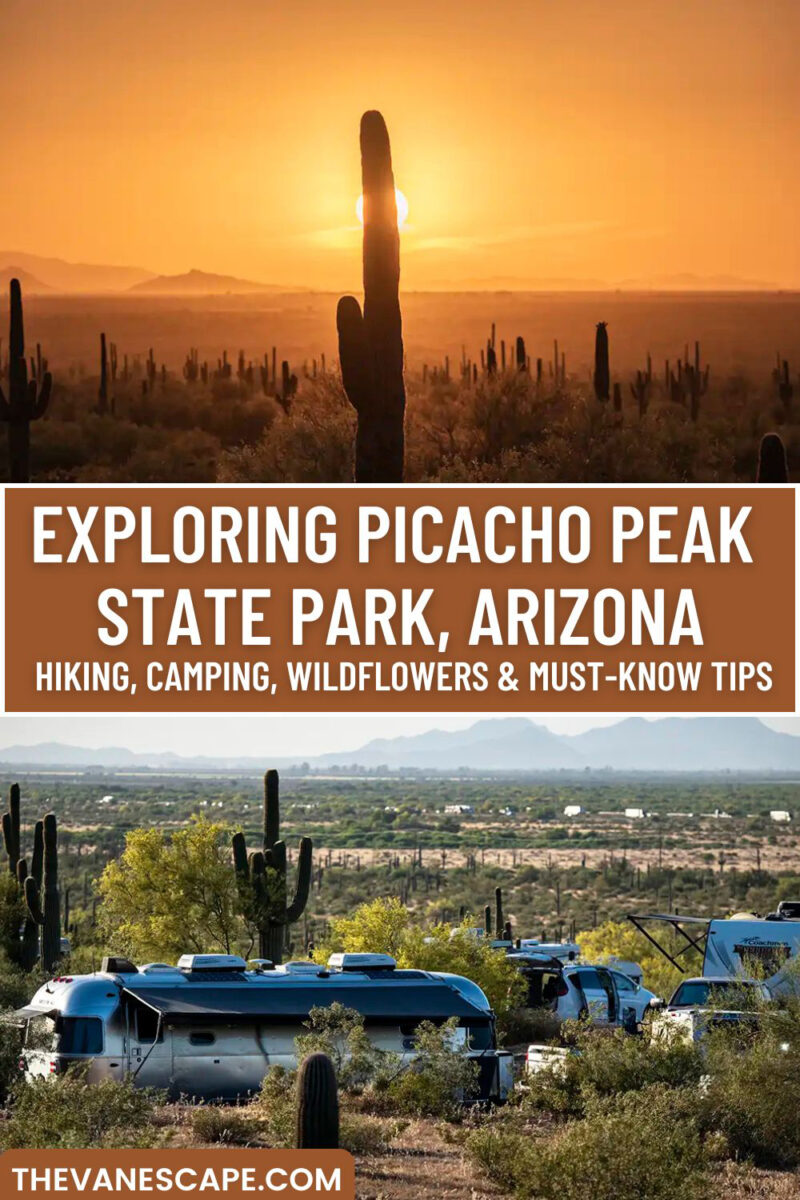Exploring Picacho Peak State Park: Scenic Beauty in Arizona
Planning a trip between Tucson and Phoenix? Don’t drive past Picacho Peak State Park without a second thought. This rugged desert landmark is more than just a roadside view. It’s home to epic hikes, peaceful desert camping, Saguaro cacti and rich Arizona history. Whether you’re a seasoned hiker looking for a challenge or just want to explore the Sonoran Desert’s beauty, this park delivers. You’ll learn exactly what to expect, how to plan your visit, and why this spot might surprise you. Read on if you’re looking for real tips, honest advice, and insider info to make your visit count.
This article may contain affiliate / compensated links. For full information, please see our disclaimer here.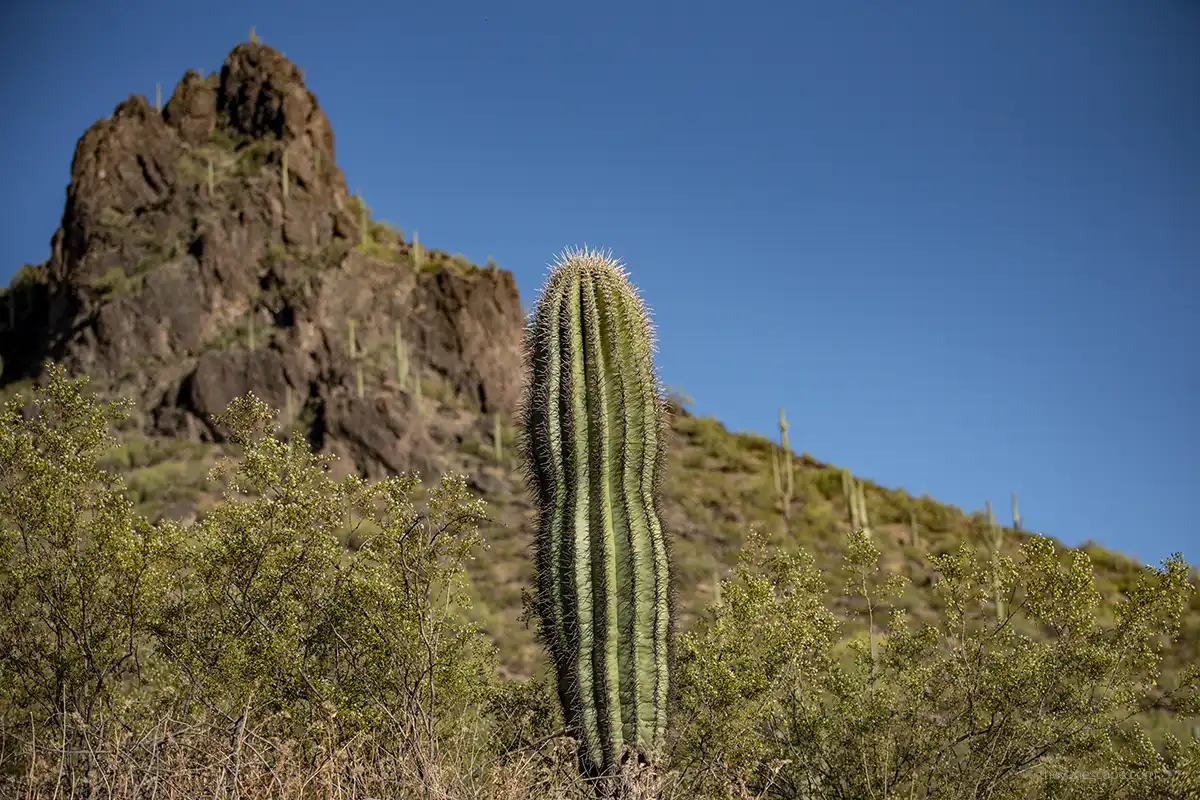
Our Spring Escape to Picacho Peak State Park
Chris and I love Arizona, especially in spring when the desert comes alive with color. Seeing the cacti in bloom, especially the towering saguaros, is something we always look forward to. After exploring the stunning landscapes of Saguaro National Park, we wanted to visit other parks where we could enjoy the same blooming beauty. We also enjoyed seeing blooming cholla cacti in Joshua Tree National Park in California, but saguaros are by far my favorite.
When I saw photos of Picacho Peak State Park, I knew it was the perfect spot for us. It looked like the ideal place to soak in the desert scenery and enjoy a peaceful camping experience.
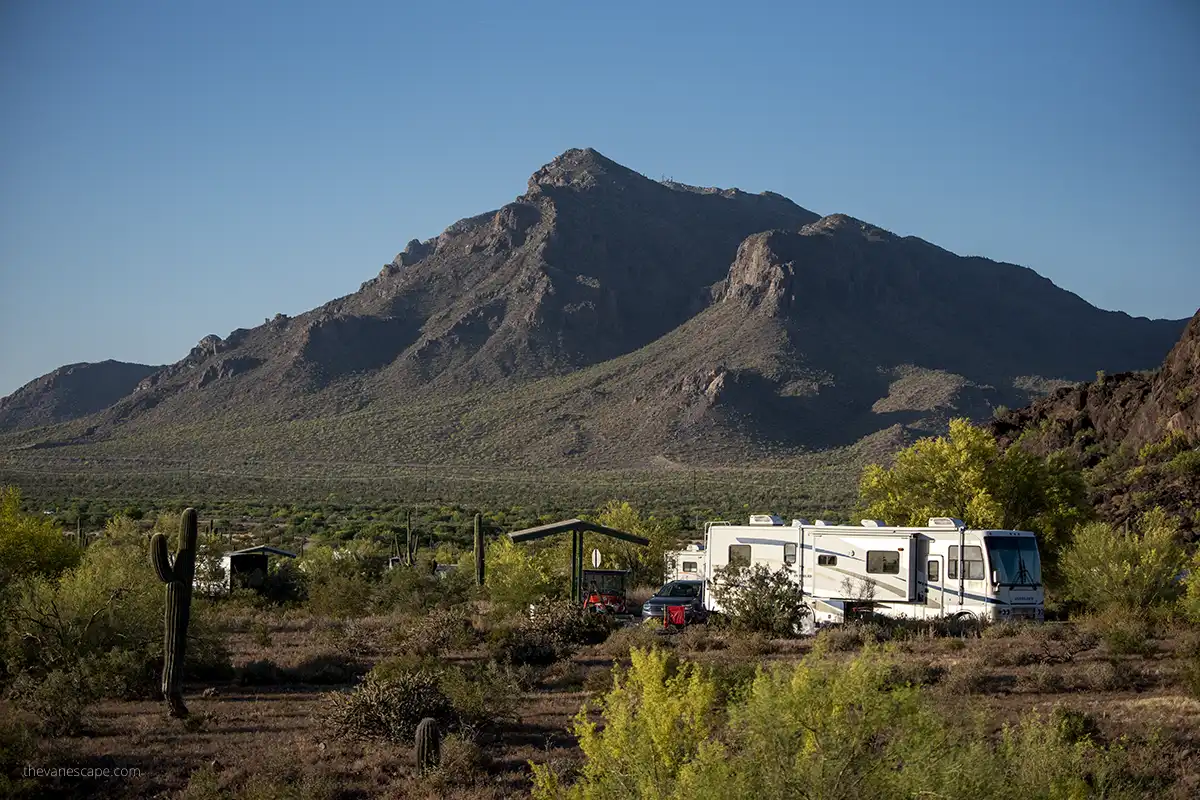
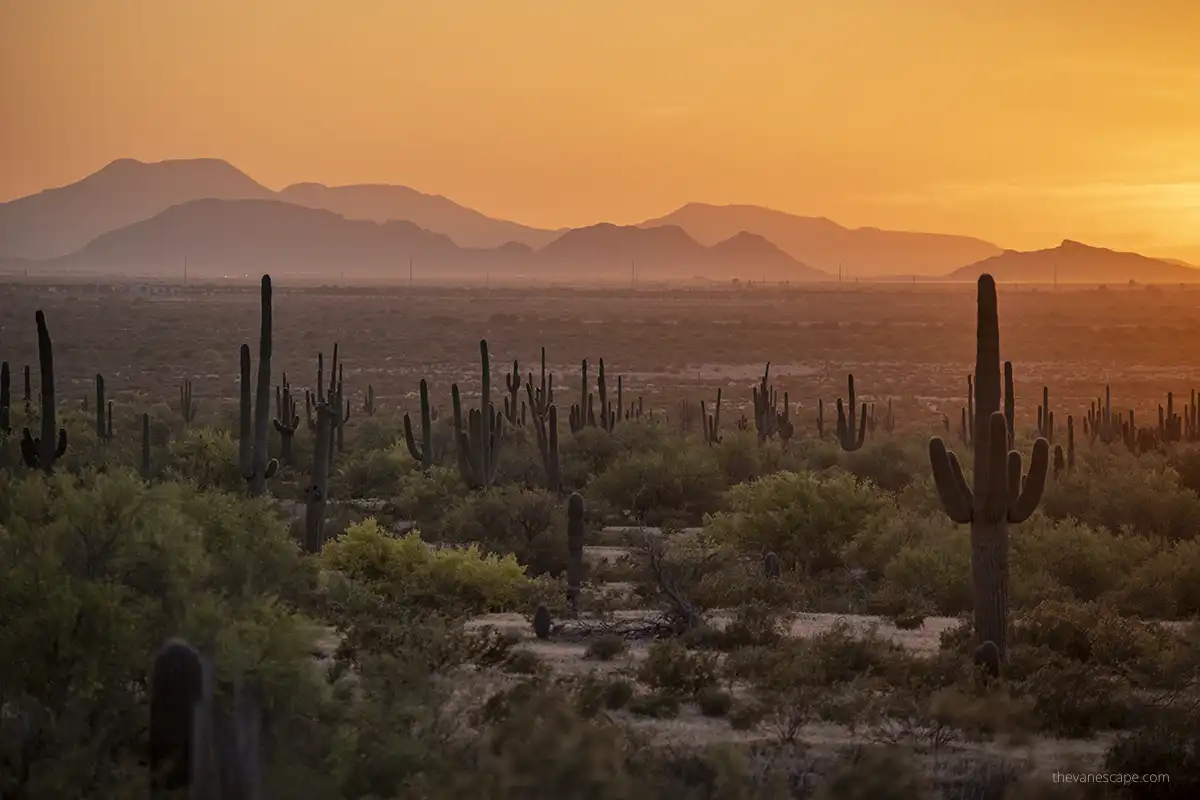
In this article, we share everything you need to know before visiting. We cover the best hiking trails, including what to expect from the famous Hunter Trail. Moreover, we explain camping options with real tips to help you prepare. You’ll also find must-know visitor info, packing advice, and tips.
We’ve explored this park ourselves—and we’re here to help you make the most of your visit. This article is packed with useful, practical details. If you’re asking “Is Picacho Peak State Park worth visiting?”—this article will give you the honest answer. In short: YES!
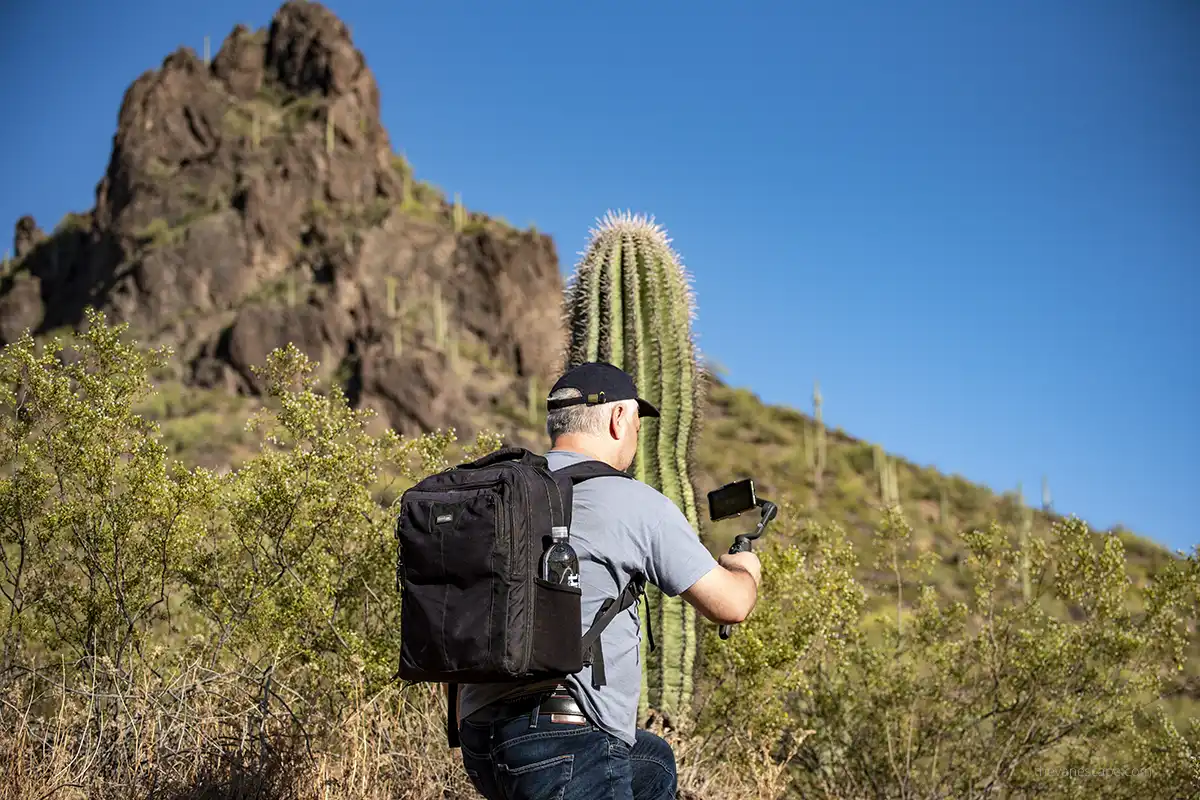
Introduction to Picacho Peak State Park: Location and Significance
Picacho Peak State Park is one of Arizona’s most recognizable landmarks. You can see its sharp peak from miles away along Interstate 10. It rises from the flat Sonoran Desert like a giant stone wave, reaching 3,374 feet.
This park sits about halfway between Tucson and Phoenix. It’s a convenient stop if you’re driving through, but it’s more than just a quick detour. Picacho Peak offers adventure, beauty, and peace in the desert. It’s known for its rugged hiking trails, spring wildflowers, and striking views.
The name “Picacho” comes from the Spanish word for “peak.” The area has long been a landmark for travelers and explorers. Today, it’s a place where people come to hike, camp, enjoy the desert scenery, and connect with Arizona’s natural beauty.
One of the best times to visit is spring. The desert blooms with color, especially after a rainy winter. Bright yellow poppies cover the hillsides, and saguaros start to bloom. The mix of desert stillness and bright flowers is unforgettable.
Picacho Peak State Park isn’t just for expert hikers. It welcomes all kinds of travelers. Whether you want to challenge yourself with a steep climb, set up a quiet campsite, or take photos of wildflowers, this park delivers a full experience.
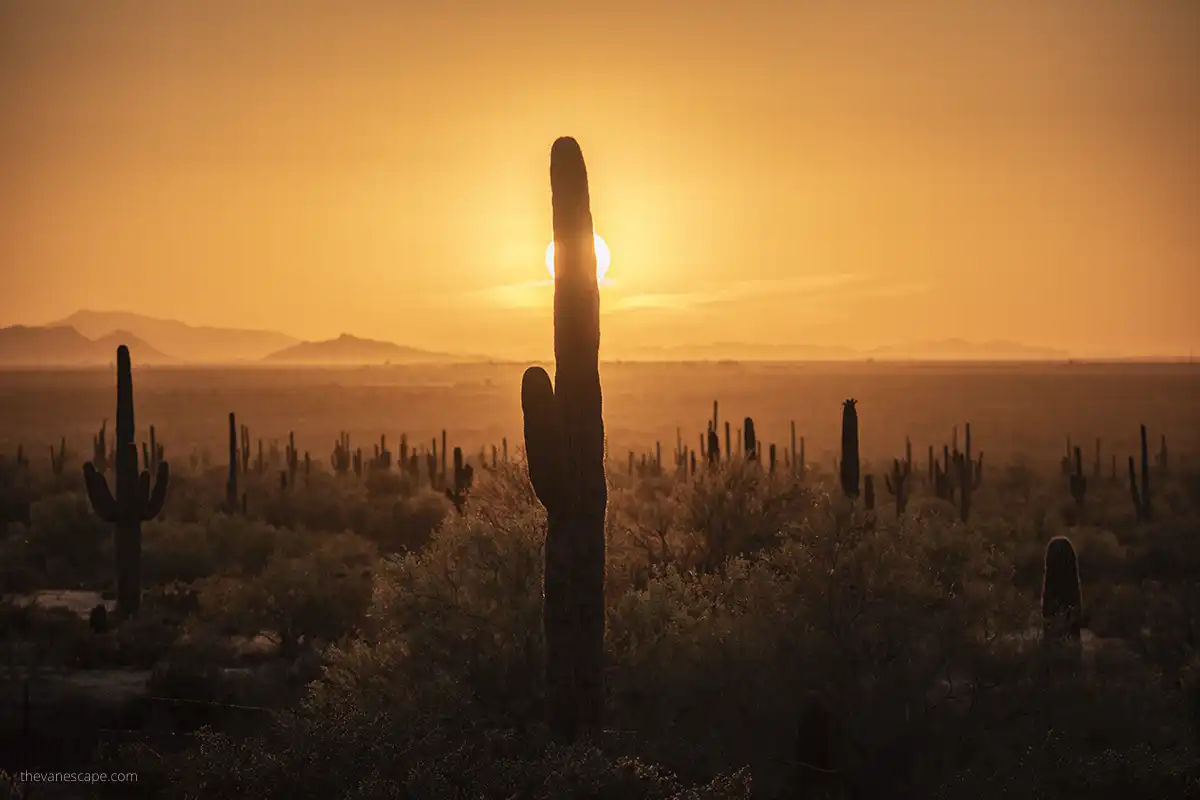
Opening Hours and Entrance Fee
The park is open year-round from 5 a.m. to 10 p.m. The entrance gate closes at 10 p.m., so make sure to arrive before then. Trails are only open from sunrise to sunset. Night hiking is not allowed.
Entrance fees to Picacho Peak State Park depend on how many people are in your vehicle. If you’re entering alone, the fee is $10 per vehicle. 2 to 4 people in the vehicle, the fee is $20 total. If you’re arriving on foot or by bicycle, the fee is $5 per person. These fees cover day-use access to all park facilities and trails.
The best time to visit Picacho Peak State Park is spring, from mid-February through early April. This is when wildflowers bloom—especially after a wet winter. Yellow poppies, purple lupines, and blooming saguaros cover the hills. Summer is very hot. Plan your hike early in the day to avoid the heat.
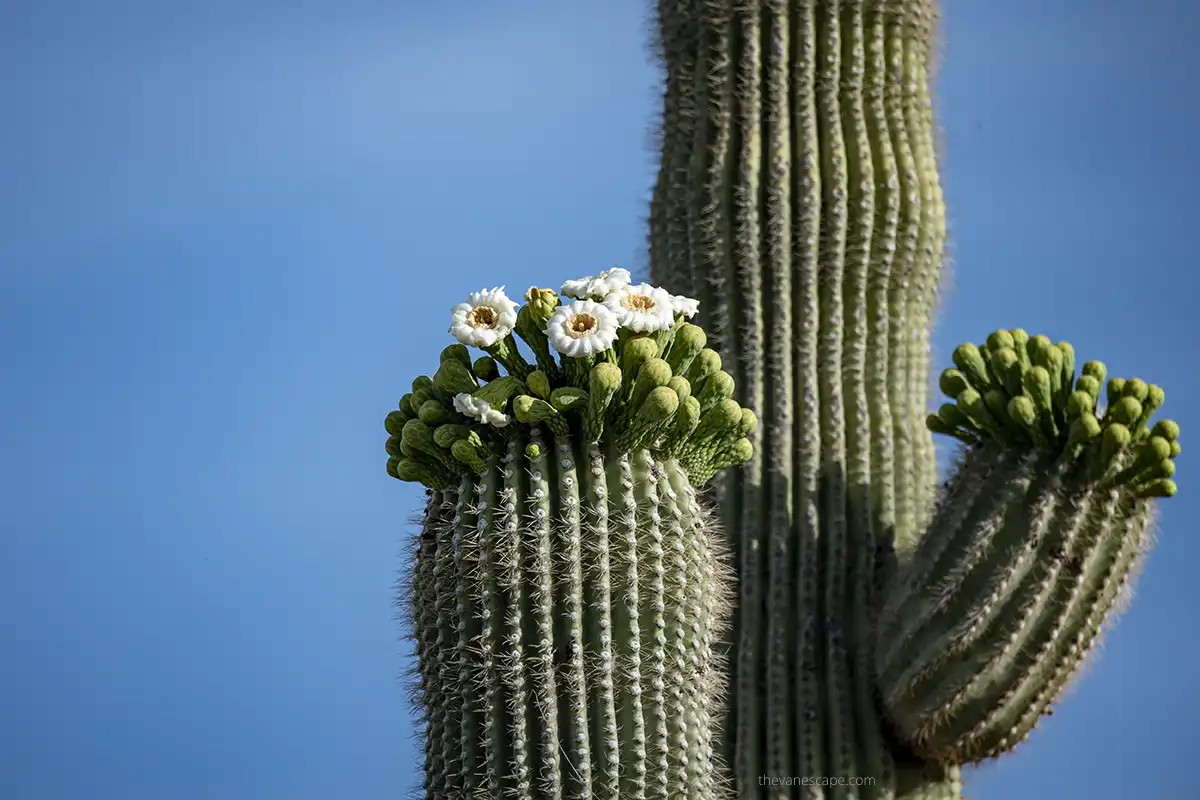
Hiking Trails at Picacho Peak State Park
Picacho Peak State Park offers a variety of trails suitable for different skill levels. Each trail provides a unique experience, from leisurely walks among desert flora to challenging climbs with panoramic views. Visit the official State Park website to download a free PDF map with trail routes and short descriptions. Here’s a breakdown of the main trails in the park.
Memorial Loop Trail
- Length: 0.1 miles (loop)
- Difficulty: Easy
- This short, paved loop is great for all ages and abilities. It’s also wheelchair accessible. Along the path, you’ll find signs about the Civil War Battle of Picacho Pass. It’s perfect for a quick walk with some Arizona history.
Nature Trail
- Length: 0.5 miles (loop)
- Difficulty: Easy
- This peaceful loop is lined with desert plants and interpretive signs. It’s a nice option for beginners or anyone wanting to enjoy the Sonoran Desert without much elevation gain.
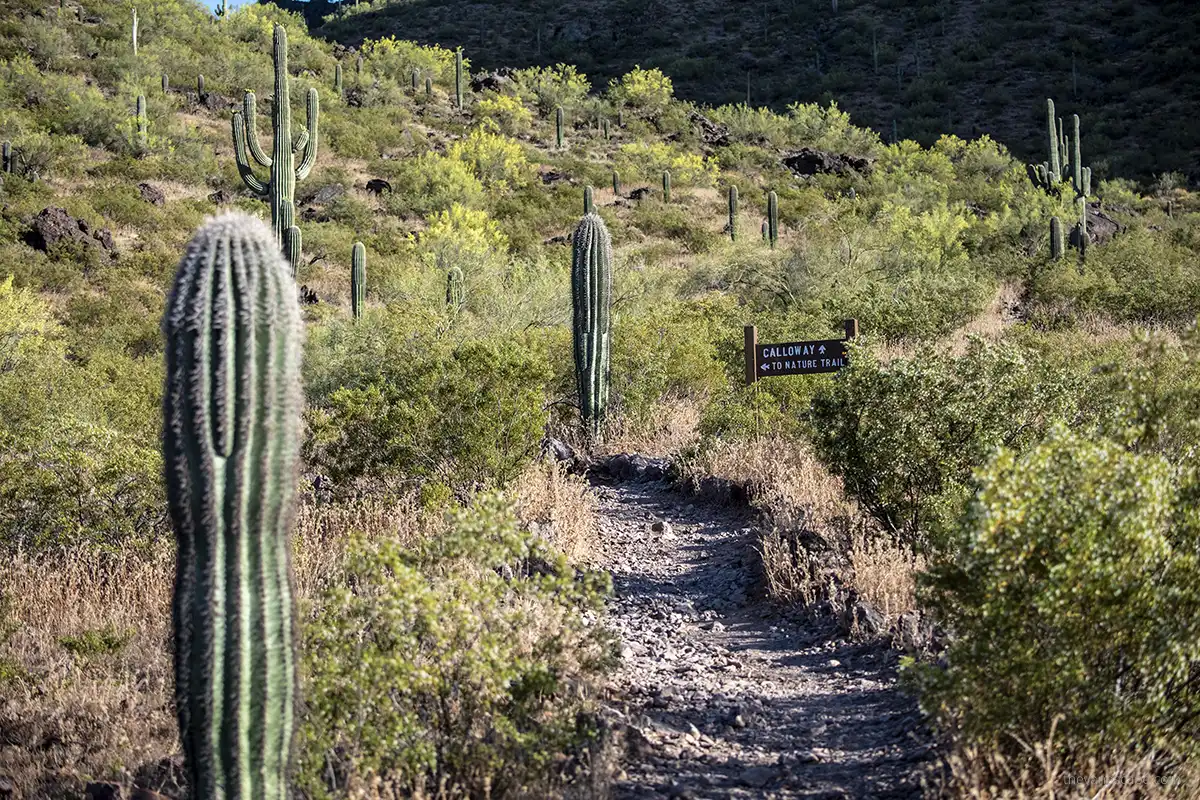
Children’s Cave Trail
- Length: 0.2 miles (one way)
- Difficulty: Easy
- A great trail for families. It leads to a small cave-like feature in a boulder, sparking kids’ imaginations. The walk is short and flat, with educational signs along the way.
Calloway Trail
- Length: 0.5 miles (one way)
- Difficulty: Moderate
- This scenic trail climbs about 300 feet and offers one of the best views in the park. It’s not too long, but you’ll get a good workout. The overlook is a great reward for the effort.
Sunset Vista Trail
- Length: 3.1 miles (one way)
- Difficulty: Moderate to Difficult
- This is one of the park’s most scenic trails. It starts from the west side of the park and winds around the southern base of the peak. The first part is moderate, with great views and desert plants. The final mile is tough, with steep climbs and steel cables to help you up. Gloves are strongly recommended for gripping the cables.
Hunter Trail
- Length: 1.6 miles (one way)
- Difficulty: Difficult
- This is the park’s most famous—and most challenging—trail. It climbs steeply from the north side of the peak. You’ll pass through switchbacks and cable sections anchored to the rock. Gloves are highly recommended for safety. The view from the top is incredible, but the climb requires strength, balance, and caution.
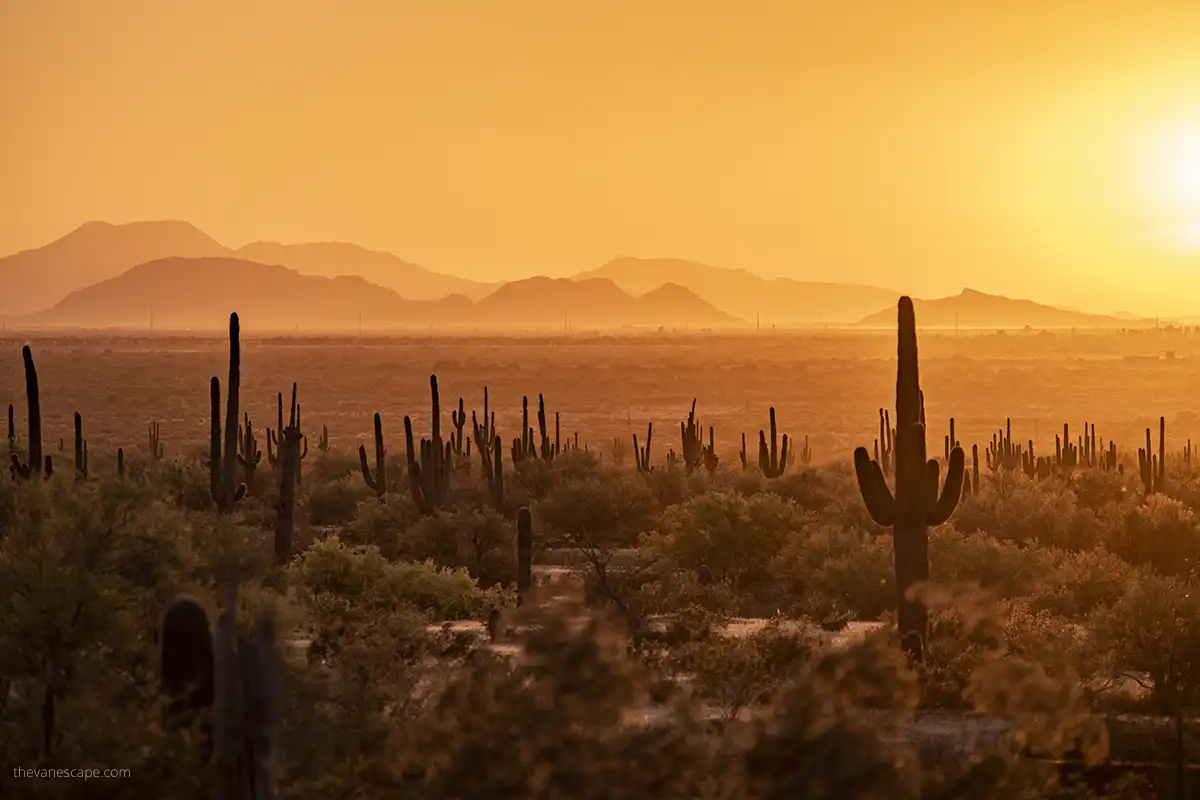
Tips for All Hikers
- Start early to avoid the desert heat.
- Bring at least 0.5 to 1 gallon of water per person (about 2 to 4 liters).
- Protect your body from the sun—wear long sleeves, long pants, and a wide-brimmed hat.
- Wear sturdy hiking boots with good traction. They also protect your feet from cactus spines and sharp rocks.
- Carry gloves if you’re hiking Hunter or Sunset Vista Trail—cables can be tough on bare hands.
- Trails are open from sunrise to sunset—no hiking after dark.
- Stay on marked trails to avoid damaging plants and disturbing wildlife.
- Be alert for rattlesnakes, especially in warm months.
- Keep dogs on a leash and carry out all trash.
- Follow park rules to help protect this beautiful desert area.
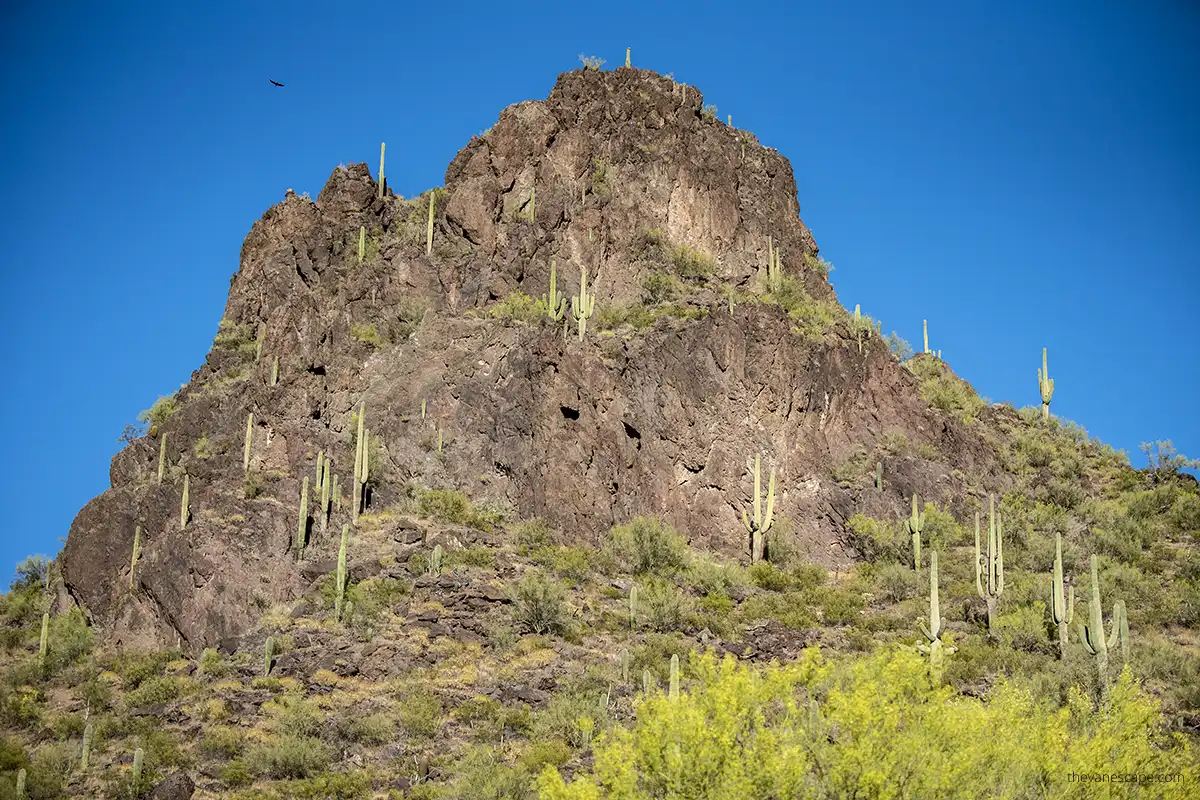
Camping at Picacho Peak State Park
Picacho Peak State Park offers a memorable desert camping experience, conveniently located between Tucson and Phoenix. The campground features 78 electric sites suitable for both tents and RVs. Each site includes a picnic table and a barbecue/fire ring, with many also offering ramadas for shade. Paved access ensures ease of entry, and the fairly level sites accommodate various camping setups.
You’ll find clean restrooms with hot showers, included in the camping fee. There’s also a dump station for RVs. Wi-Fi is available at campsites for an extra fee. If you’re traveling with pets, the park has a small off-leash dog area just for campers.
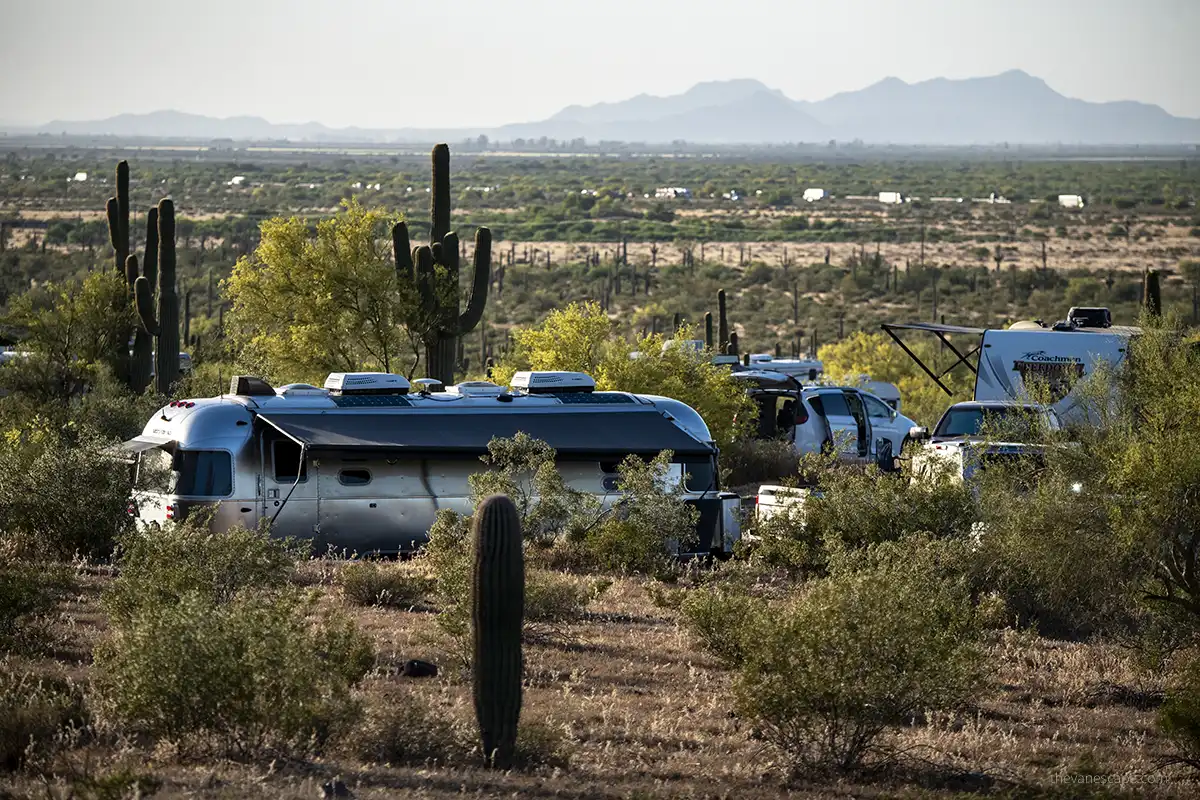
Camping costs $50 per night per vehicle during peak season (September–May), and $40 in summer (June–August). Rustic, no-hookup sites are $25 per night. Additional vehicles are $15 per night. Group sites are available with a reservation. You can reserve your spot via the official website.
Important to know—due to water shortages, you cannot fill RV tanks at the park. Bring enough water with you. Quiet hours are from 10 p.m. to 6 a.m., and the entrance gate closes at 10 p.m. nightly.
Picacho Peak is a great spot for peaceful camping, starry skies, and easy access to scenic trails.
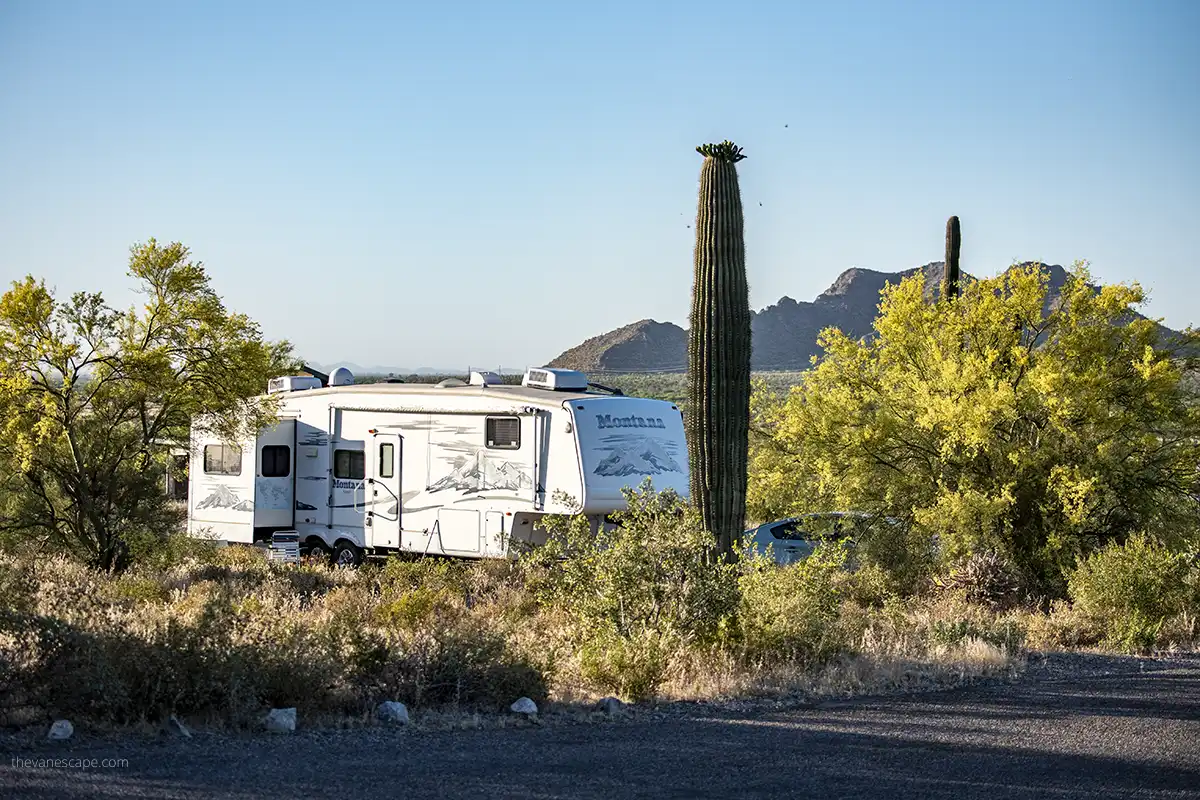
Flora and Fauna: The Sonoran Desert Ecosystem
Picacho Peak State Park sits in the heart of the Sonoran Desert. This desert is one of the most biologically rich in North America. It’s home to unique plants and animals that have adapted to the harsh climate.
The most iconic plant here is the saguaro cactus. These giants can grow over 40 feet tall and live more than 150 years. In spring, they bloom with white flowers that attract bees, birds, and bats. Saguaros are protected in Arizona, and Picacho Peak is a great place to see them in bloom.
You’ll also find blooming wildflowers in spring, especially after a wet winter. Golden poppies often cover the slopes in yellow and orange. Other common plants include cholla cacti, barrel cacti, ocotillo, palo verde trees, and creosote bushes.
The park is also home to many desert animals. You might spot lizards sunbathing on rocks or hear the call of a cactus wren. Roadrunners dart across trails, and red-tailed hawks soar above the peak. At dusk, you may see jackrabbits or even a shy coyote in the distance.
Watch your step—rattlesnakes live here too. They’re usually shy and avoid people but stay alert, especially in warmer months.
The best time to observe desert life is early morning or late afternoon. That’s when temperatures are lower, and animals are more active. Bring binoculars if you enjoy birdwatching—this area is full of desert species.
Exploring the flora and fauna of Picacho Peak gives you a real sense of the Sonoran Desert’s beauty and life. It’s a reminder of how plants and animals adapt and thrive in the desert.
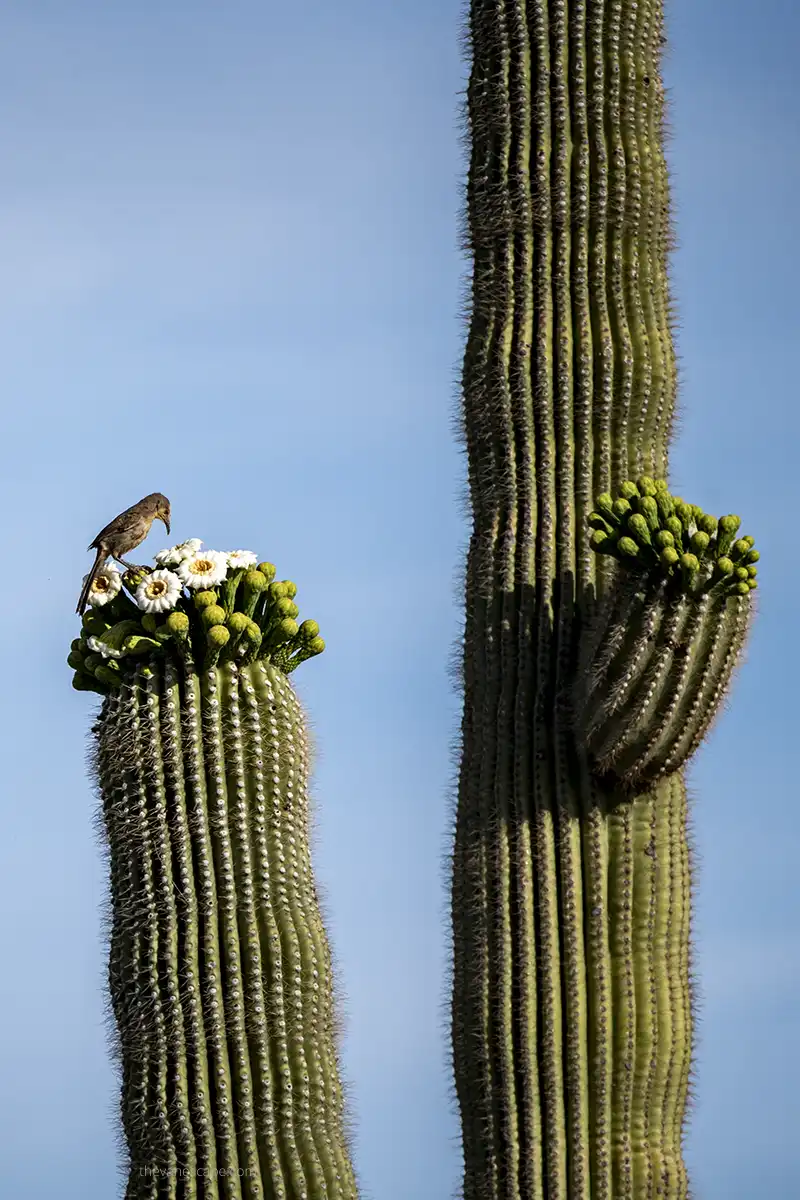
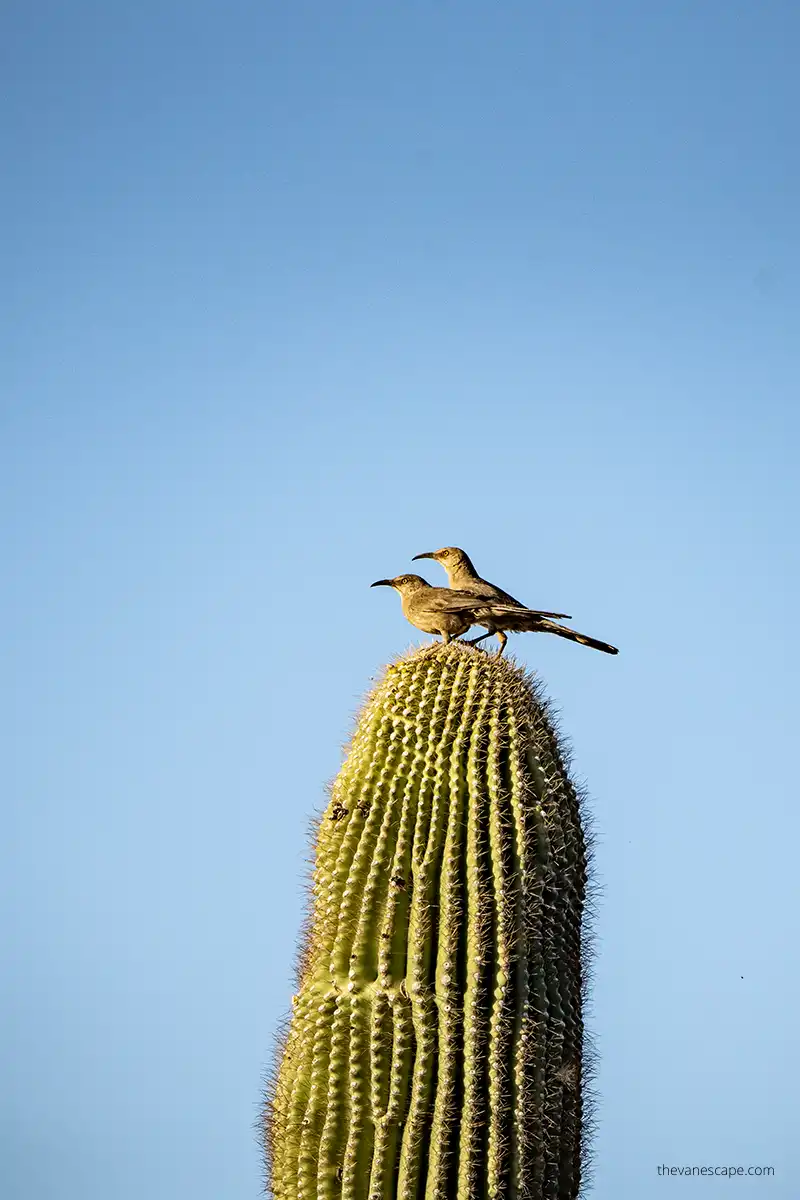
Historical Significance of Picacho Peak
Picacho Peak is more than just a scenic landmark. It also holds a unique place in American history. In fact, it was the site of the westernmost battle of the U.S. Civil War.
The Battle of Picacho Pass took place on April 15, 1862. It was a brief but intense fight between Union cavalry troops from California and Confederate scouts from Texas. The skirmish lasted about 90 minutes. Three Union soldiers were killed, and several were wounded. The Confederate force retreated.
Though small, the battle had strategic meaning. It showed that Union forces were moving into the area to stop the Confederate push into the West. The goal was to control Arizona and New Mexico and possibly reach the Pacific Coast. The Union eventually took control of the territory, cutting off Confederate plans.
Today, you can visit a small memorial loop trail in the park. It has signs explaining the battle and its impact. Every year, the park has also hosted Civil War reenactments, although they are not held annually anymore. These events help bring the past to life and remind visitors of the area’s role in the nation’s history.
Picacho Peak served as a landmark for early travelers, too. Native peoples, Spanish explorers, and pioneers used it as a guide across the desert. Its name—“Picacho” means “peak” in Spanish—has appeared on maps for centuries.
Standing at Picacho Peak, you’re not just looking at a mountain. You’re looking at a place that helped shape the story of the American West.

Conclusion: Is Picacho Peak State Park Worth Visiting?
Yes—Picacho Peak State Park is absolutely worth visiting. It’s one of those places that surprises you. From the highway, it looks like just another desert mountain. But once you step onto the trails, you discover a rugged and beautiful world.
The park offers something for everyone. Adventurous hikers will love the challenge of climbing to the summit. Families can enjoy easy nature walks, wildflowers, and picnic spots. Campers can spend a quiet night under star-filled skies. Springtime brings the desert to life with blooming saguaros and colorful flowers.
It’s also a place where history meets nature. The site of a Civil War skirmish, Picacho Peak is part of the American story. And with its location between Tucson and Phoenix, it’s an easy stop for road trippers exploring Arizona.
If you love hiking, desert landscapes, or just want a peaceful spot to connect with nature—Picacho Peak won’t disappoint. Bring your boots, water, and camera. This desert gem is waiting for you.
Do You Like It? Pin It For Later!

